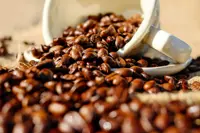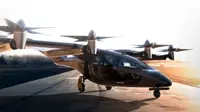Surge pricing by railways an unexpected booster for airlines
09 Sep 2016
The decision by Indian Railways to introduce surge pricing for Rajdhani, Shatabdi and Duronto trains will further expedite the shift of rail passengers towards airlines, giving an unintended impetus to the country's growing aviation sector.
 From today, the railways has introduced surge pricing on base fares of Shatabdi, Rajdhani and Duronto trains. According to the Railway Board formula, the base fares will increase by 10 per cent with every 10 per cent of train berths sold. Duranto fares are similar to Rajdhani fares.
From today, the railways has introduced surge pricing on base fares of Shatabdi, Rajdhani and Duronto trains. According to the Railway Board formula, the base fares will increase by 10 per cent with every 10 per cent of train berths sold. Duranto fares are similar to Rajdhani fares.
"Even as railways increased fares, our last minute fares will remain the same as earlier," a senior Air India official told The Economic Times.
Hence, if you were to buy an Air India ticket from Delhi to Bangalore four hours before departure, it would cost you Rs1,530 less than a second class AC railway ticket, ET points out. Moreover, you get a confirmed plane ticket, instead of a waitlisted Rajdhani or Duronto ticket. You can get an Air India ticket for Rs4,095, whereas the second AC would cost you Rs5,626.
Other airlines are also providing tickets at almost same prices as Air India. A comparison between Shatabdi train fares and air fares cannot be made because the Shatabdis run on short haul sectors.
Analysts say that the shift has already started from rail to air with the difference between AC fares and air fares reducing to up to Rs800, and this increase in difference will only expedite it.
"This is good news for the aviation industry in India that is seeing over 20 per cent growth in passenger numbers, which is the highest in the world. Looking at the capacity expansion the airlines have and the level at which oil (price) is, air fares are going to get lower further in the future," said Sharat Dhall, president at Yatra.com, an online travel portal.
Bajpai added the shift towards surge pricing may not impact Indian Railways in terms of passenger carriage. "Surge pricing is only in premier class, which is a small percentage of railways' total capacity and passengers carried. So the impact will not be much," he said.
Bajpai's views were echoed by a Railway Board member. "Not more than 10 per cent of traffic would go to airlines. We already have waiting list of 300-400 for Rajdhani trains. I don't think railways would lose passengers. Today, airlines are offering low prices because the fuel prices are low and demand is lean. They will also increase prices once demand goes up and then people will find railways cheaper. We are following the same model. We couldn't have reduced base fares because we have no lean season and base fares are already so low," he said.
He said that railways has already tried surge pricing of up to 3.9 times the base fare of Rajdhani trains for its special Suvidha trains, run during the festive season.
"For a second class Rajdhani type segment, people are already paying Rs5,000 during Diwali and Holi. We have introduced surge pricing keeping all factors in mind. It's an experiment for us," he added.


.webp)





















